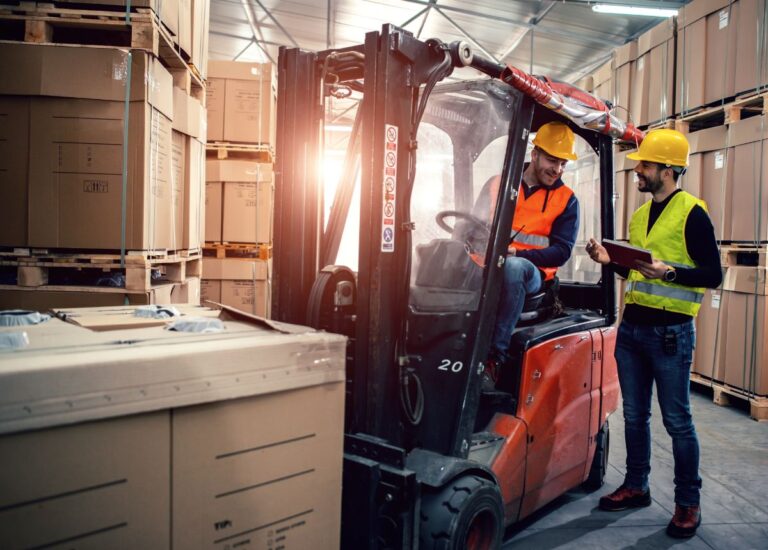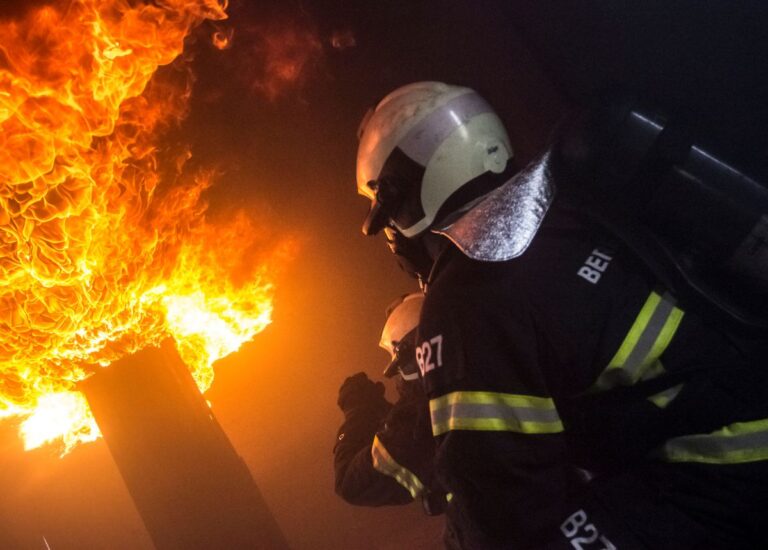A Guide to General Health and Safety Trainings in UAE
In the dynamic landscape of the United Arab Emirates (UAE), where businesses thrive and diversity flourishes, ensuring the well-being of employees is paramount. General health and safety training play a pivotal role in creating a secure and productive work environment.
In this blog post, we will delve into the significance of health and safety training, the process of selecting the right certification body, and explore the various third-party certifications available in Dubai.
The Importance of Health and Safety Trainings:
In the pursuit of a thriving workplace, the importance of health and safety training cannot be overstated. These trainings are not merely compliance requirements; they are integral to fostering a culture of well-being.
Employees equipped with the knowledge of safety protocols contribute to accident prevention, minimizing workplace hazards, and ultimately creating a more secure environment. Beyond legal obligations, investing in health and safety training demonstrates a commitment to employee welfare, boosting morale and productivity.
Types of Third-Party Health and Safety Certifications Available in Dubai:
Dubai offers a variety of third-party health and safety certifications catering to diverse industries. Some prominent certifications include:
a. NEBOSH (National Examination Board in Occupational Safety and Health):
- Known for its global recognition, NEBOSH certifications cover a range of occupational health and safety topics.
- Suitable for professionals aspiring to become health and safety practitioners or enhance their existing skills.
b. IOSH (Institution of Occupational Safety and Health):
- IOSH certifications focus on providing practical knowledge to manage health and safety in the workplace.
- Ideal for supervisors and managers, these certifications are tailored to specific industries.
c. ISO 45001:2018 – Occupational Health and Safety Management System:
- An international standard, ISO 45001:2018, provides a framework for organizations to establish and maintain an effective occupational health and safety management system.
- It demonstrates a commitment to creating a safe and healthy workplace, enhancing the organization’s reputation.
General Health And Safety Trainings at Elite International Training
Here’s a list of training we at Elite International Training offer:
Fire Warden/Marshals Training:
Equip individuals with the skills to effectively respond to fires and emergencies. This training covers fire prevention, evacuation procedures, and the use of fire safety equipment. Participants learn to identify fire hazards, implement preventive measures, and take charge during emergency situations. The focus is on developing leadership skills to coordinate evacuations, manage communication, and ensure the safety of all personnel.
Banksman Training:
This training focuses on guiding and directing the movement of vehicles and equipment in a construction or industrial setting. Emphasizing communication, hand signals, and hazard awareness, participants gain the expertise to ensure the safe and efficient operation of machinery. Banksman training is crucial for preventing accidents and creating a well-coordinated work environment.
Personal Survival Technique:
Essential for individuals working in maritime environments, this training teaches survival skills in the event of emergencies at sea. Participants learn to effectively abandon ship, use life-saving equipment, and respond to various maritime emergencies. Personal survival techniques are critical for ensuring the safety of individuals working in offshore or maritime industries.
Flagman Training:
This training is designed for individuals responsible for signaling and directing traffic, especially in construction zones or roadwork areas. Participants are educated on proper signaling techniques to ensure the safe flow of traffic. Flagman training emphasizes communication skills and hazard awareness to prevent accidents and maintain efficient traffic control.
Scaffolding Inspection Training:
Providing knowledge on inspecting and ensuring the safety of scaffolding structures, this training covers regulatory compliance, identification of defects, and preventive maintenance. Participants learn to conduct thorough inspections, assess scaffolding stability, and implement corrective measures. Scaffolding inspection training is essential for maintaining a secure work environment in construction and related industries.

COSHH Assessment:
Focusing on Control of Substances Hazardous to Health (COSHH) regulations, this training teaches the assessment and management of risks associated with hazardous substances in the workplace. Participants learn to identify, evaluate, and control exposure to harmful substances, ensuring compliance with safety standards and regulations.
Man-lift Operator Training:
Instructing individuals on the safe operation of man-lifts or aerial work platforms, this training covers proper usage, maintenance, and emergency procedures. Participants gain the skills to operate these elevated platforms safely, reducing the risk of accidents and ensuring a secure working environment.
Ladder Safety:
Emphasizing the correct usage, inspection, and storage of ladders, this training addresses common hazards associated with ladder use. Participants learn proper techniques to prevent falls and injuries when working with ladders, contributing to a safer workplace.
Crisis Management:
This training prepares individuals to respond effectively to crises and emergencies. Covering crisis communication, decision-making, and coordination of resources, participants develop the skills needed to navigate challenging situations. Crisis management training is crucial for minimizing the impact of emergencies and ensuring a swift and organized response.
Safety Monitoring Training:
Focusing on continuous monitoring of workplace safety, this training teaches techniques for identifying and addressing potential hazards in real-time. Participants learn to conduct safety assessments, implement corrective actions, and contribute to the ongoing improvement of safety protocols.
Heat Stress and Awareness:
Educating individuals on recognizing and preventing heat-related illnesses, this training covers measures to stay safe and healthy in high-temperature work environments. Participants gain an understanding of the signs of heat stress, proper hydration, and preventive measures to mitigate the risks associated with working in elevated temperatures.
Also Read:
Root Cause Analysis:
Equipping individuals with tools to investigate incidents and accidents, this training focuses on identifying underlying causes to implement effective preventive measures. Participants learn systematic approaches to root cause analysis, contributing to a culture of continuous improvement and risk reduction in the workplace.
Scaffolding Erection/Dismantling Training:
Equipping individuals with tools to investigate incidents and accidents, this training focuses on identifying underlying causes to
Providing skills for the safe assembly and disassembly of scaffolding structures, this training emphasizes compliance with safety standards and regulations. Participants learn the proper procedures for erecting and dismantling scaffolding, ensuring structural integrity and the safety of workers.
implement effective preventive measures. Participants learn systematic approaches to root cause analysis, contributing to a culture of continuous improvement and risk reduction in the workplace.
Safe Use of Suspended Access Equipment:
Instructing individuals on the proper and secure use of suspended access systems, this training covers safety protocols for working at heights. Participants learn to operate suspended access equipment safely, reducing the risk of falls and accidents during elevated work.
Incident and Accident Investigation & Reporting:
Teaching the systematic process of investigating workplace incidents, this training emphasizes accurate reporting to prevent future occurrences. Participants develop the skills to conduct thorough investigations, document findings, and implement corrective actions to enhance overall workplace safety.
Basic Scaffolding Safety:
Offering fundamental knowledge of scaffolding safety practices, this training is suitable for individuals working in construction or maintenance involving scaffolding. Participants learn the basics of safe scaffolding usage, inspection, and compliance with safety regulations.
Safe Use of Forklifts:
Instructing on the safe operation of forklifts in industrial settings, this training emphasizes load handling, stability, and hazard awareness. Participants learn proper forklift operation techniques, reducing the risk of accidents and ensuring a secure working environment.

Safe Use of Construction Hoist:
Focusing on the proper operation and safety protocols associated with construction hoists, this training includes preventive maintenance and emergency response. Participants gain the skills needed to operate construction hoists safely, minimizing the risk of accidents and ensuring efficient vertical transportation on construction sites.
Basic Firefighting:
Covering the fundamentals of firefighting, including the use of fire extinguishers, this training teaches individuals how to respond effectively to small fires. Participants learn basic firefighting techniques, evacuation procedures, and the importance of rapid response to prevent the spread of fires.
Rigging and Slinging:
Providing knowledge on proper rigging techniques for lifting and moving heavy loads, this training emphasizes load calculations, inspection, and signaling. Participants gain the skills to perform rigging and slinging operations safely, reducing the risk of accidents and ensuring the secure movement of loads.
Site Safety Inspection and Site Safety Audit:
Training individuals to conduct thorough safety inspections and audits on construction sites, this program focuses on identifying and mitigating potential hazards. Participants learn to assess safety protocols, equipment, and work practices, contributing to the overall safety culture of the construction site.
Construction Hoist Operator Safety Training:
Instructing operators on the safe use and maintenance of construction hoists, this training covers emergency procedures and load capacity considerations. Participants gain the skills needed to operate construction hoists safely, contributing to the efficiency and safety of vertical transportation on construction sites.
Rescue and Emergency Response Training:
Equipping individuals with skills to respond to emergencies and perform rescue operations, this training includes first aid, evacuation procedures, and coordination with emergency services. Participants learn the importance of rapid response, effective communication, and providing initial medical assistance during emergencies.
Forklift Operator Assessment Safety Training:
Evaluating and enhancing the skills of forklift operators, this training focuses on safe operation, load handling, and preventive maintenance. Participants undergo assessments to ensure their competence in operating forklifts safely, reducing the risk of accidents and improving overall workplace safety.
Risk Assessment:
Teaching the systematic process of identifying and evaluating workplace risks, this training enables individuals to implement effective risk control measures. Participants learn to assess potential hazards, determine risk levels, and implement preventive measures to create a safer work environment.
Tower Crane Operator Assessment:
Evaluating the competency of tower crane operators, this training covers safe operation, load handling, and awareness of environmental factors. Participants undergo assessments to ensure their proficiency in operating tower cranes safely, contributing to overall construction site safety.
General Safety Awareness:
Providing a broad overview of workplace safety principles, this training is suitable for individuals across various industries. Participants gain a foundational understanding of safety practices, fostering a safety-conscious mindset in the workplace.
Safe Use of Lifting Gear:
Instructing individuals on the proper use and inspection of lifting equipment, this training emphasizes load calculations, rigging techniques, and safety protocols. Participants learn to operate lifting gear safely, reducing the risk of accidents and ensuring secure load handling.
Basic Welding Training:
Introducing individuals to the fundamentals of welding safety and techniques, this training covers protective measures, equipment usage, and hazard identification. Participants gain basic welding skills while emphasizing safety protocols to prevent welding-related accidents.

Personal Safety & Social Responsibility:
Essential for individuals working in maritime or offshore environments, this training covers personal safety, emergency procedures, and social responsibility at sea. Participants learn to navigate maritime emergencies, use life-saving equipment, and fulfill their social responsibility in ensuring a secure maritime environment.
Fire Extinguisher:
Instructing individuals on the proper use of fire extinguishers, this training emphasizes different types of extinguishers and their applications. Participants gain practical skills in using fire extinguishers effectively to control and extinguish fires in their early stages.
Fire Marshal/Warden:
Training individuals to take on leadership roles in fire emergencies, this program covers evacuation procedures, fire prevention, and coordination with emergency services. Participants develop the skills to lead and coordinate firefighting efforts, ensuring a swift and organized response to fires.
Fire Team Leader:
Preparing individuals to lead and coordinate firefighting efforts in the workplace, this training emphasizes decision-making, communication, and emergency response. Participants learn to manage firefighting teams effectively, contributing to a safer work environment.
Command and Control:
Training individuals to take charge during emergencies, coordinating response efforts, this program covers communication, resource allocation, and incident management. Participants gain the skills needed to lead and direct emergency response teams, ensuring a coordinated and efficient response.
Fire Prevention and Fire Fighting:
Providing comprehensive training in preventing and responding to workplace fires, this program includes fire safety measures, extinguisher usage, and evacuation procedures. Participants develop the skills to prevent and control fires, contributing to a safer work environment.

Hazard Identification (Hazid) Training:
Teaching systematic hazard identification and risk assessment techniques, this training enables individuals to proactively identify and mitigate workplace hazards. Participants learn to assess potential risks, implement preventive measures, and contribute to a safer working environment.
Emergency Preparedness & Evacuation:
Instructing individuals on preparing for and executing emergency evacuation procedures, this training emphasizes coordination, communication, and first aid. Participants learn to respond effectively to emergencies, ensuring the safety of all personnel during evacuation.
Chemical and Biological Hazard:
Addressing the safe handling and mitigation of chemical and biological hazards, this training covers protective measures, decontamination procedures, and emergency response. Participants gain the skills to work safely with hazardous substances, reducing the risk of exposure and accidents.
Job Safety Analysis:
Teaching the systematic process of analyzing and mitigating job-related safety risks, this training involves identifying hazards, determining control measures, and creating safe work procedures. Participants gain the skills to conduct job safety analyses, contributing to a safer work environment.
Cradle Operator Training:
Instructing individuals on the safe operation of cradles used in construction and maintenance, this training covers proper usage, preventive maintenance, and emergency procedures. Participants gain the skills needed to operate cradles safely, ensuring efficient and secure access to elevated work areas.
Work at Height:
Instructing individuals on safety measures when working at elevated heights, this training covers the proper use of fall protection equipment and prevention of falls. Participants learn to assess risks associated with working at height, implement safety measures, and contribute to a secure working environment.
Conclusion:
Prioritizing general health and safety training in the UAE is not only a legal requirement but a strategic investment in the well-being of employees and the success of businesses.
By choosing the right certification body and exploring the various third-party certifications available in Dubai, organizations can foster a culture of safety, contributing to a healthier and more productive work environment.
